This post may contain affiliate links. We may receive a small commission, at no cost to you, if you make a purchase. Read Disclosure.
Chiang Mai in Thailand is quickly becoming one of the most popular cities for digital nomads.
It’s a place where you can unwind and appreciate a less bustling environment from its sister city, Bangkok, whilst still having all the necessities around you to be able to work and live.
Digital nomads in Chiang Mai have the benefit of low cost of living, modern conveniences such as coworking spaces, urban cafes and coffee shops, as well as gyms and yoga studios.
Chiang Mai not only provides a space where you can feel productive, but you can also thrive – surround yourself with other working professionals and make connections, so you can not only work but grow as a professional in your field.
If you’re thinking of choosing Chiang Mai as your next digital nomad location, then this guide will tell you everything you need to know and what to expect from living in Chiang Mai as a remote worker.
What Is It Like To Live In Chiang Mai?
We felt the vibe as soon as our flight to Chiang Mai arrived. The size of the airport, though still a major hub in Northern Thailand, was small and easily navigated.
From then on, it only got better. As soon as we reached the city we immediately felt relaxed.
The Old City, which is surrounded by an ancient wall and moat, is full of serene buddhist temples, quaint coffee shops, and traditional restaurants.
There is an air of calmness here, and a tendency to take like slower.
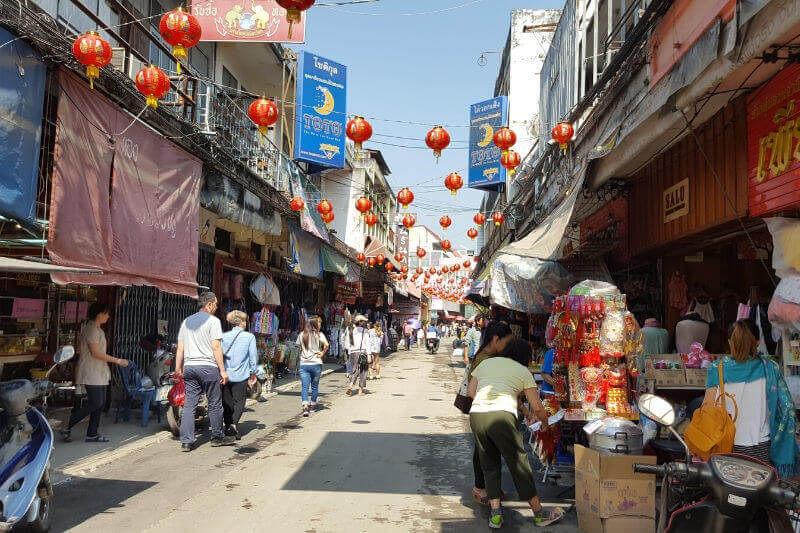
Chiang Mai has a sensibility all its own, as it was once part of the Lan Na Empire, which included present day Burma (Myanmar) and Laos.
The influences from Northern, Southeast Asian countries, prevail here more than that of the southern part of their own country.
The capital, Bangkok, with its bustling cars and chaos almost feels like another world away, even though it’s only an hour plane ride away.
Food in Chiang Mai
Chiang Mai has its own regional cuisine which takes influences from its neighbors. More than anything else, Chiang Mai is best represented by the quintessential Chiang Mai dish, Khao Soi.
Transplanted from Burma, it’s a soup dish highly preferred by Northern Thai people and their neighbor, Laos.
Khao Soi is a creamy coconut curry soup, not ubiquitous in the South, with a slew of aromatics (such as tumeric) mixed in with shrimp paste.
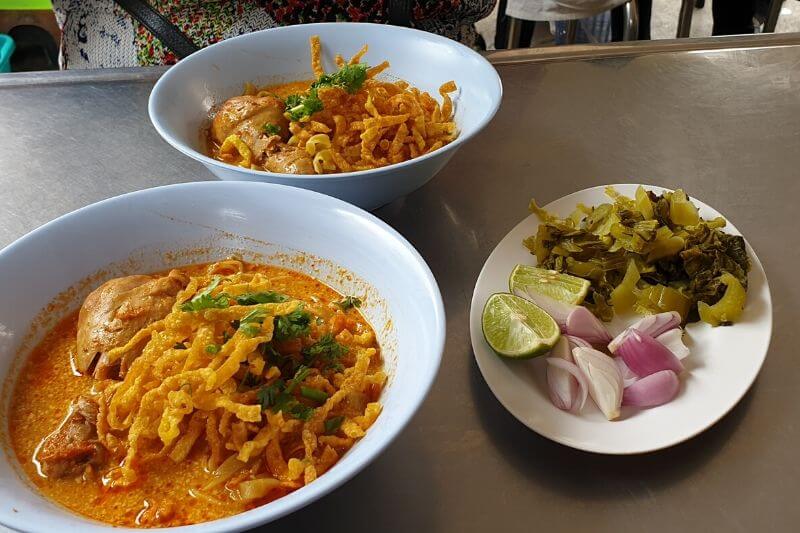
In the broth is a protein, either chicken or fish, along with boiled thick yellow noodles and fried noodles (akin to the fried wonton given as starters in most Chinese Restaurants in the West).
It’s best when complimented with condiments such as hot chili paste, fresh cilantro, fresh sliced onions, and lime.
When reading the ingredients out, one can get the impression that it may taste something akin to Mexican Cuisine.
The flavor profile of Khao Soi, however, is like nothing I have ever tasted, before or after. It was silky and powerful at the same time, a metaphor of the Great Kingdom it was.
Of course you can find other popular Thai dishes here, such as Pad Thai, Massamam Curry, and Mango Sticky Rice.
Cost of Living in Chiang Mai
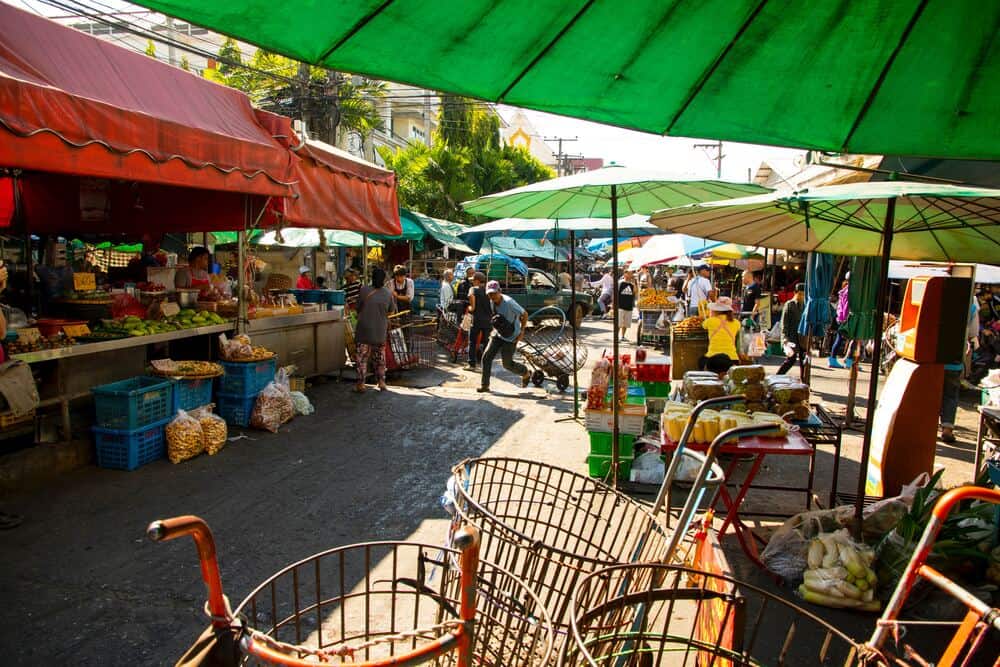
Chiang Mai is well known for its affordable cost of living. The average monthly cost of living in Chiang Mai ranges from $600 to $1,550 USD per month, depending on your lifestyle and accommodation choices.
This includes expenses such as housing, transportation, food, and entertainment.
In terms of housing, it is possible to find apartments ranging from $300 to $600 per month, depending on the location and amenities.
Transportation costs are relatively low, with affordable options like public buses and songthaews (red trucks) available. But I highly recommend you rent a scooter as its a much more convenient way to get around (plus that’s how the locals do it).
You can usually negotiate a monthly rental cost with a scooter rental. If you’re outside the peak tourist season, you can get a cheaper scooter rental, but the price will increase during November – February.
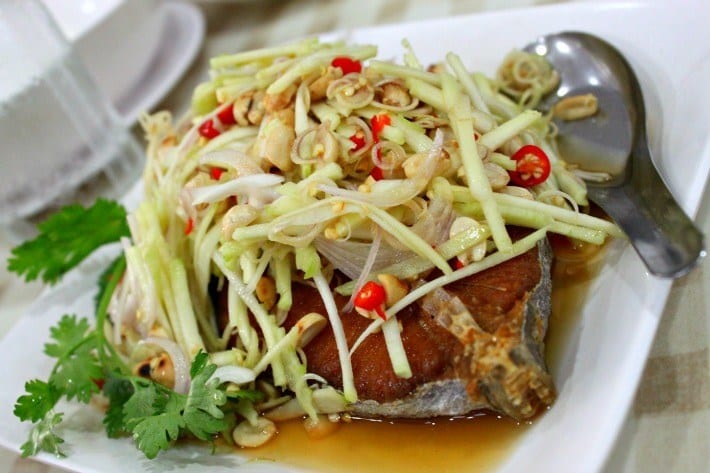
Food in Chiang Mai is famously delicious and inexpensive. You can enjoy a variety of local dishes at street food stalls or local restaurants for as little as $1 to $5 per meal.
Additionally, there are numerous Western-style supermarkets and markets where you can buy groceries at reasonable prices.
Also, for an almost unbelievably small fee of 150 Baht, you can pick up a local sim card from a communication company, from either TrueMove or AIS, and have unlimited WiFi.
If you ever need to work somewhere where free Wi-Fi isn’t provided (an unlikely scenario in Chiang Mai) you can connect to your hotspot and be connected just about everywhere in the city. It put to rest our worry of roaming charges.
Where to Work in Chiang Mai?
One of the best things about being a digital nomad in Chiang Mai is the abundance of places to work.
There is no shortage of cute coffee shops and cafes, but if you need to get some real work done, then head to one of the coworking spaces and connect with the digital nomad community.
Some of our favorites include:
Camp Workspace, Maya, Chiang Mai
There are many platforms set up for those who need a semblance of an office. One of the best places for this is a workspace named, Camp, on the top floor of the most famous mall in Chiang Mai, Maya Mall.
This space, which is free of charge if you have your own wifi (not a problem with the cheap unlimited data you can get in Thailand!), and only the cost of a cup of coffee if you don’t.
This was where we as a family were able to work and do our homeschooling with our daughter.
If work gets a little tedious, just head out onto the mall and take a breather.
It is, like most malls, filled with eateries, shops and a food court. If fresh air is what’s needed, there is a rooftop where there are a few places to sneak in a drink.
One time, we took a breather for the rest of the evening by seeing a movie at the cinema that sat just across the way from the workspace.
Punspace Tha Phae Gate
Punspace Tha Phae Gate is a modern and cosy space for those seeking an inspiring coworking environment.
With its spacious and peaceful setting, this coworking space offers a conducive atmosphere for focused work.
Situated in the old city, it provides easy access to numerous cultural landmarks, allowing for immersive experiences during breaks or after work.
The presence of a coffee shop on the ground floor ensures that you can fuel your productivity with tasty beverages.
Additionally, Punspace Tha Phae Gate boasts high-speed internet, comfortable lounge areas, phone booths, and excellent coffee, which creates an overall productive atmosphere.
Yellow Coworking Space
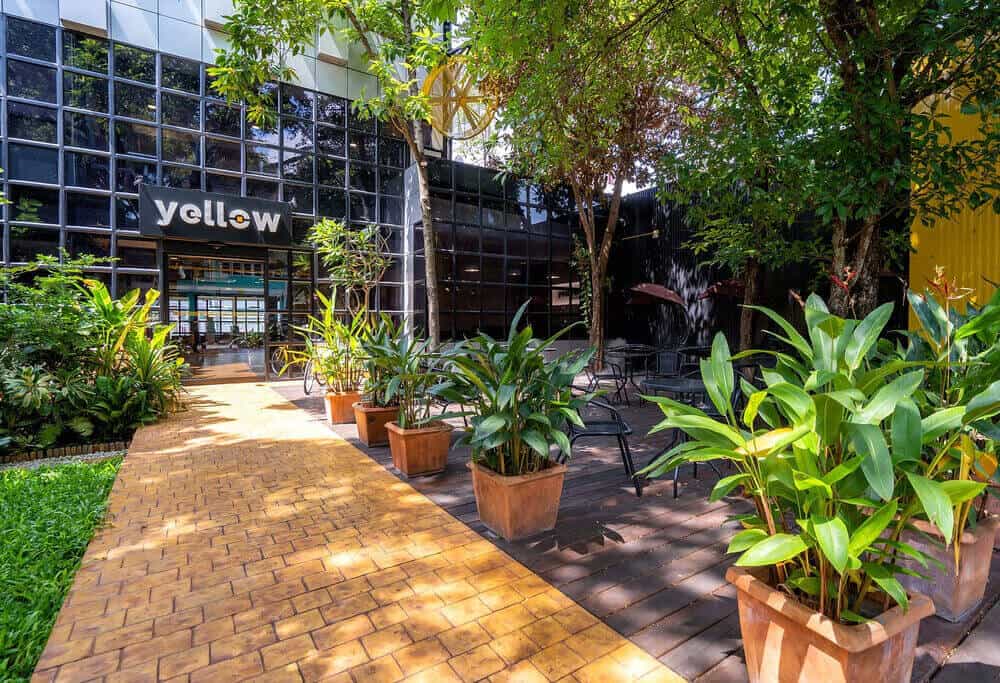
Yellow Coworking Space is a vibrant and innovative work environment. Located in Southeast Asia’s renowned startup hub, this coworking space doubles as a blockchain incubator, fostering collaboration and growth within the industry.
It offers shared and private office spaces, meeting rooms, event areas, and specialized facilities like soundproof Skype booths and YouTube streaming rooms. This makes it a better environment for remote workers with a more corporate job.
How to Meet People in Chiang Mai?
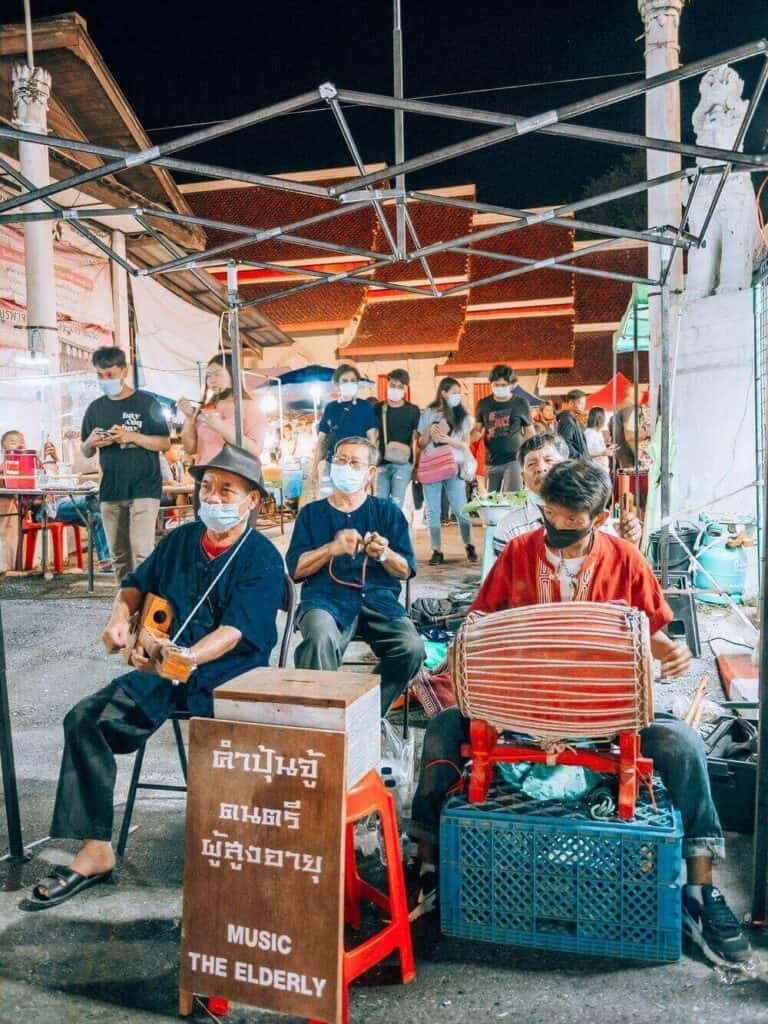
Of course, it’s not all about work and you need time to play too. If you’re worried about meeting people, then don’t worry, here are some great ways to make some friends in a new city.
The first is to sign up to the platform Meetup.com. This is a free platform where you will find events in the area, from language exchanges to hiking groups to yoga classes and art classes.
It’s a great way to connect with not only other expats but locals as well.
Also join the Chiang Mai digital nomads facebook group, which has over 38K members! People not only use this group as a platform to connect with others in the city, but also to share information about events and meetups.
And of course, there’s a chance to meet others at the coworking spaces in Chiang Mai.
Where to Stay in Chiang Mai
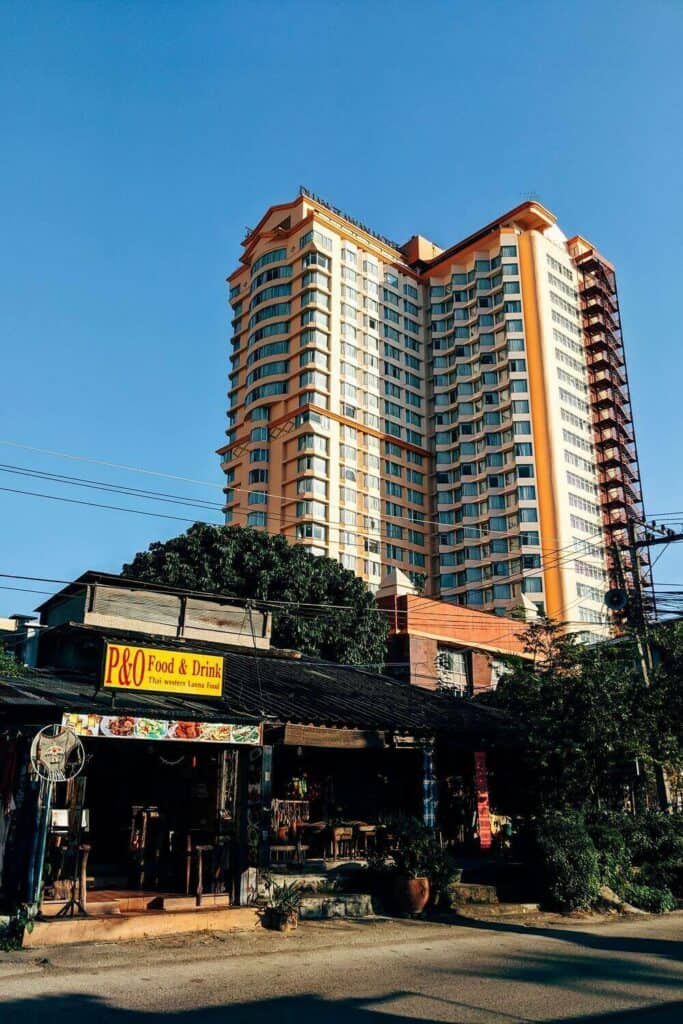
The Old City is a popular choice as a neighborhood to stay in since it’s known for its historic charm, with its ancient temples, vibrant markets, and traditional architecture.
Nimmanhaemin is another sought-after neighborhood, known for its trendy cafes, boutique shops, and art galleries.
Riverside is another favored neighborhood, known for its scenic views and proximity to the Ping River, offering a peaceful ambiance.
The Night Bazaar area is a busy area and is where you will find a lot of backpacker hostels, so you might not want to stay near here if you are looking to stay for a while.
You can find apartment rentals using VRBO and over booking platforms, but our preferred choice of finding places to stay in Chiang Mai is Booking.com, which has over 800 properties in Chiang Mai including hotels, condos and apartments, and guesthouses. Most of the accommodations prefer to use it since it’s such a well-known brand.
Modern Conveniences
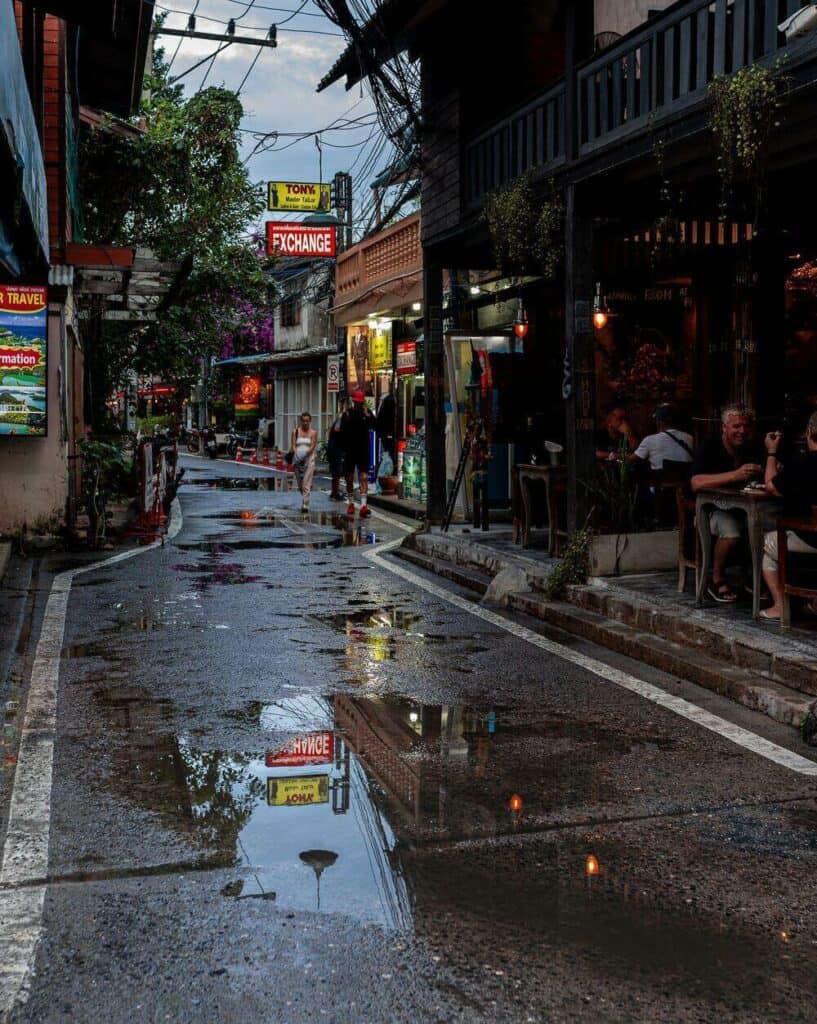
Another decision factor when thinking about becoming a digital nomad in Chiang Mai is access to modern conveniences.
When it comes to laundry services, there are numerous laundry shops scattered throughout the city, but most apartment blocks will have their own laundry room. Some apartments come with washing machines, but it’s not common.
There are also plenty of pharmacies that have western medicine, so if you ever need paracetamol or other over-the-counter meds, it’s easy to access healthcare products.
In terms of healthcare facilities, Chiang Mai boasts modern hospitals equipped with state-of-the-art technology and highly skilled medical professionals.
Whether you’re in need of routine check-ups or emergency care, these hospitals offer comprehensive healthcare services.
For fitness enthusiasts, Chiang Mai also has a diverse range of gyms, fitness centers, and yoga studios, catering to different workout preferences and goals. You can even find a personal trainer – in fact, many Westerners move here to become trainers so you might have an Australian showing you the ropes.
Chiang Mai is small but it’s still a city, and so you’ll find various supermarkets, shopping malls, and convenience stores all over the city, making it convenient to find daily necessities.
Best Time to Visit Chiang Mai as Digital Nomads
The best time to be a digital nomad in Chiang Mai is from November until February when the weather is nice and there’s little rain, so you can get out an enjoy attractions in your off-time.
The downside is that’s also the time that travelers come to Chiang Mai, so you have to share the city with backpackers as well.
November is when the famous Lantern Festival takes place in Chiang Mai, when hundreds of lanterns are released into the sky at one time. You’ll absolutely want to make sure you’re in Chiang Mai for that (preferably before so you have accommodation sorted, as it’s busy this time of year).
April and May is the burning season, when farmers burn their fields in preparing for the next growing season.
This makes Chiang Mai incredibly hot and polluted. You might want to head to the islands, or another city in Southeast Asia, to avoid the smog and poor air quality during these months.
June to October is the rainy season, but it doesn’t rain every day, so you will still have some days of sunshine if you visit this time of year.
Visa Requirements for Digital Nomads
To become a digital nomad in Thailand, or anywhere for that matter, you need to have the appropriate visa.
You cannot simply enter on a tourist visa, you need to have a visa that allows you to work in the country.
The Thailand Smart Visa is a popular option for digital nomads. To be eligible, applicants need to provide identification and a pitch deck for their project.
Another option is the 90-day Non-immigrant visa, which allows individuals to stay in Thailand for 90 days with the option to extend. This visa is suitable for digital nomads who plan to work in Thailand temporarily.
If you decide to stay longer, you can do visa-runs to Malaysia or another nearby country to restart your visa.
While Thailand does not currently have a dedicated digital nomad visa, there are other visa options available.
These include the LTR visa (long-term resident) created by the BOI, which requires an income requirement of $3,000 per month.
Digital Nomads shouldn’t forget their travel insurance. Safety Wing offers the best travel medical insurance for nomads. They cover people from all over the world, while outside their home country.
Things to Do in Chiang Mai
When you’re finished with work for the day, be sure to check out these unmissable attractions in your free time…
1. Thapae Gate Markets, Chaing Mai
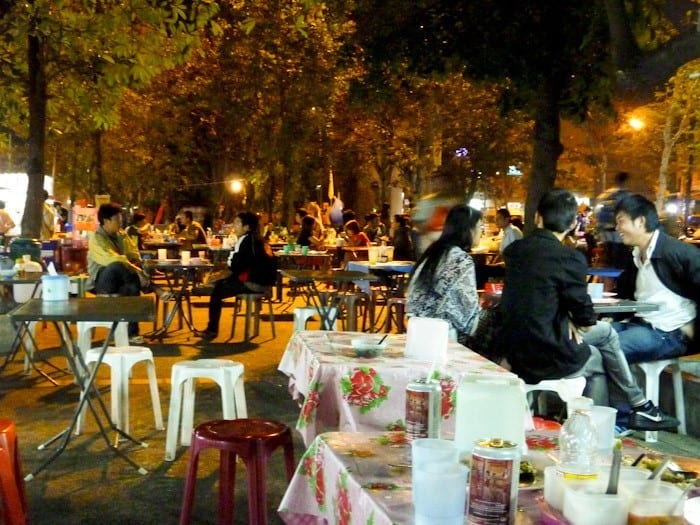
We had a few renditions of the dish while there, one being at a weekend market at the Thapae Gate. If there is one market to experience while in Chiang Mai, it is this one.
This market is gigantic and is an evening all to itself. Yes, there are good deals to be had when it comes to clothing, art, etc.
It is, however, the food options and it’s colorful vendors that separate it from all the others. It was so hard to stop sampling the food in Chiang Mai!
2. Lanna Bike and Boat Tour in Chiang Mai
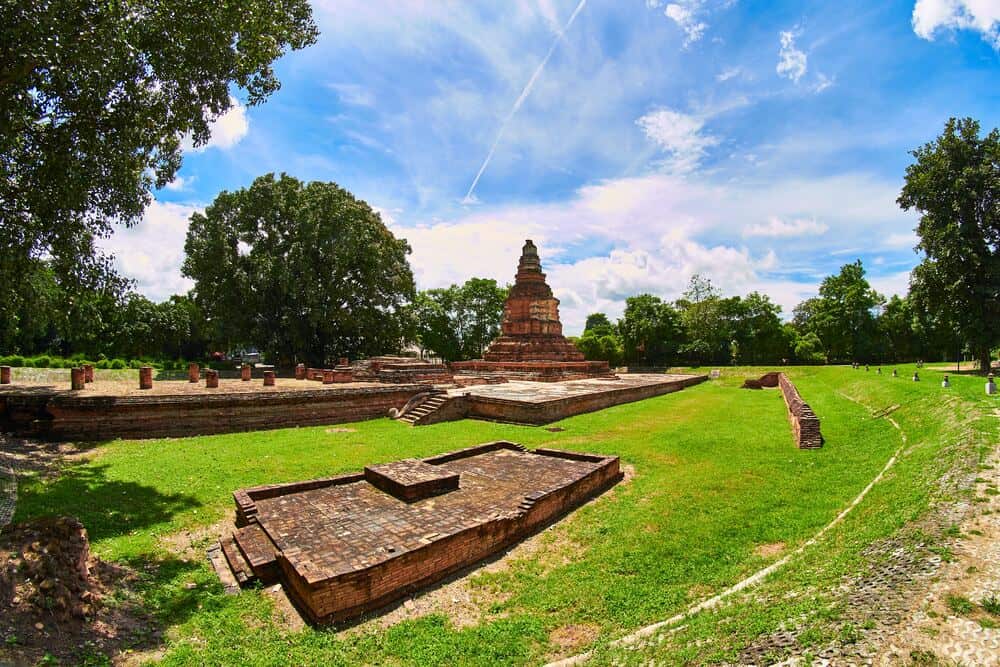
If you were to ask me where we had our best version of Khao Soi, it would have to be the one we had during a Lanna Bike and Boat tour we took in an ancient city about an hour away from Central Chiang Mai called, Wiang Kum Kam.
The bike tour took us through temple ruins, which were also significant in terms of lineage, as the temples are aesthetically and architecturally closer to those found in Burma and Laos as opposed to ones found in Southern Thailand.
Being on a bike also allowed us to weave in and out of the lovely community of traditional houses and lush land. It was also fun riding as a family and working up an appetite.
We biked toward the dock for the second portion of our tour. Which was an amazing boat ride on the majestic Mae Ping River.
The trip culminated with a visit to an amazing traditional farmhouse. Stepping off the boat, we were brought to a place that seemed secluded from everywhere else, The Thai Farmhouse Restaurant.
There were rabbits, hogs, chickens, and all sorts of herbs and fruit growing wildly. This gave the place, which was hidden under the shade of the trees that surround it, a feeling of being self-sustained and away from modern times. It was here that we had the best Khao Soi.
This gave the place, which was hidden under the shade of the trees that surround it, a feeling of being self-sustained and away from modern times. It was here that we had the best Khao Soi.
3. Visit Think Park
This part of town has many dining options, but our favorite is having a bite and a drink at the many eateries at a manmade village named, Think Park.
We especially enjoyed a small hut-like restaurant that specializes in Pad Thai. There are also mini alleys to meander about, filled with lovely little boutiques and usually there is some live music being played.
A good place to spend an evening with family and friends.
4. Check Out The Chiang Mai Temples
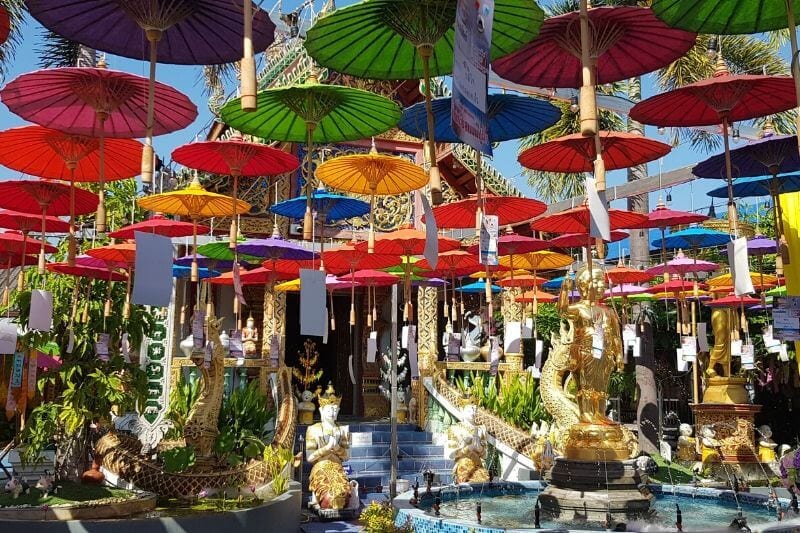
Chiang Mai has its share of temples, and the best way to see them is to probably just hop on a tuk-tuk and be brought around from one to the other.
If there are more than two of you, taking one for a few hours can cost significantly less than any tour.
Final Thoughts
There is no shortage of street food in Chiang Mai, as there is no shortage of fast internet. There certainly isn’t a shortage of friendliness.
As it has been for most of our travels, it’s the authentic smiles and kind gestures from strangers that make a place such as this so enriching and special.
Pin to Save on Pinterest
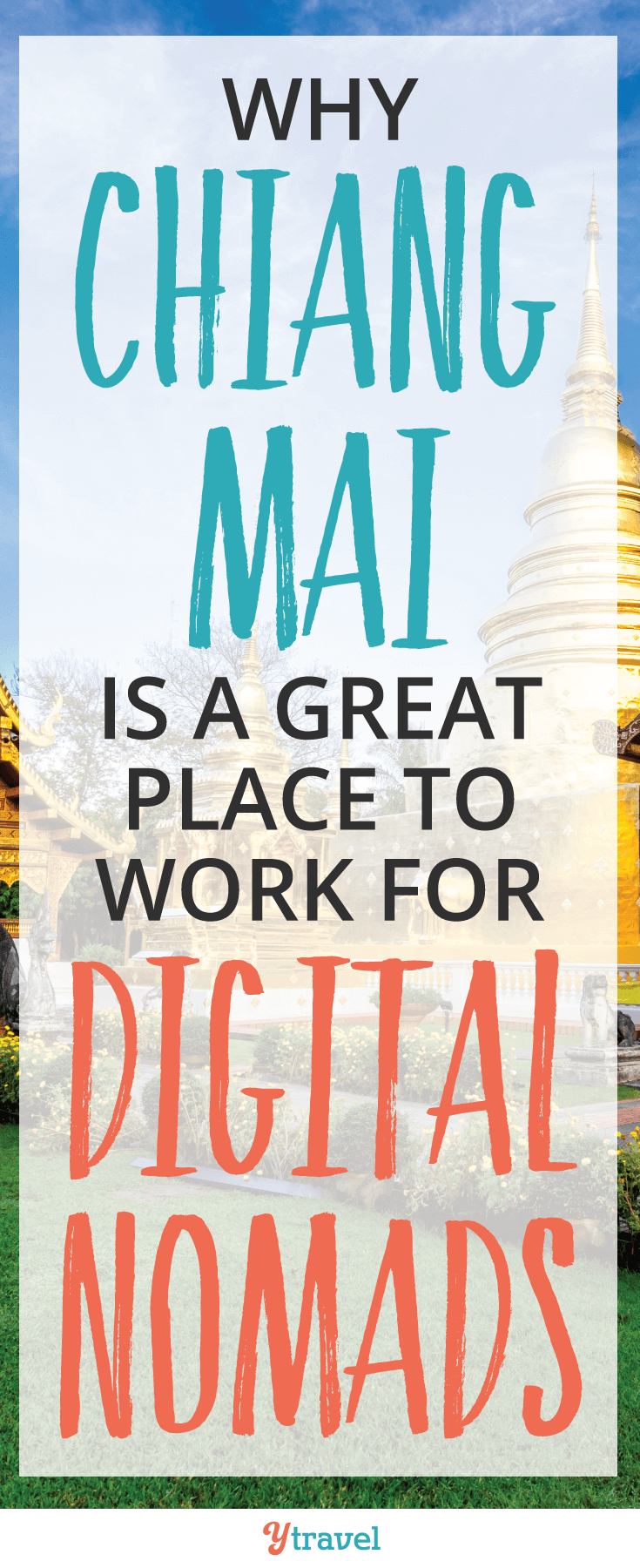
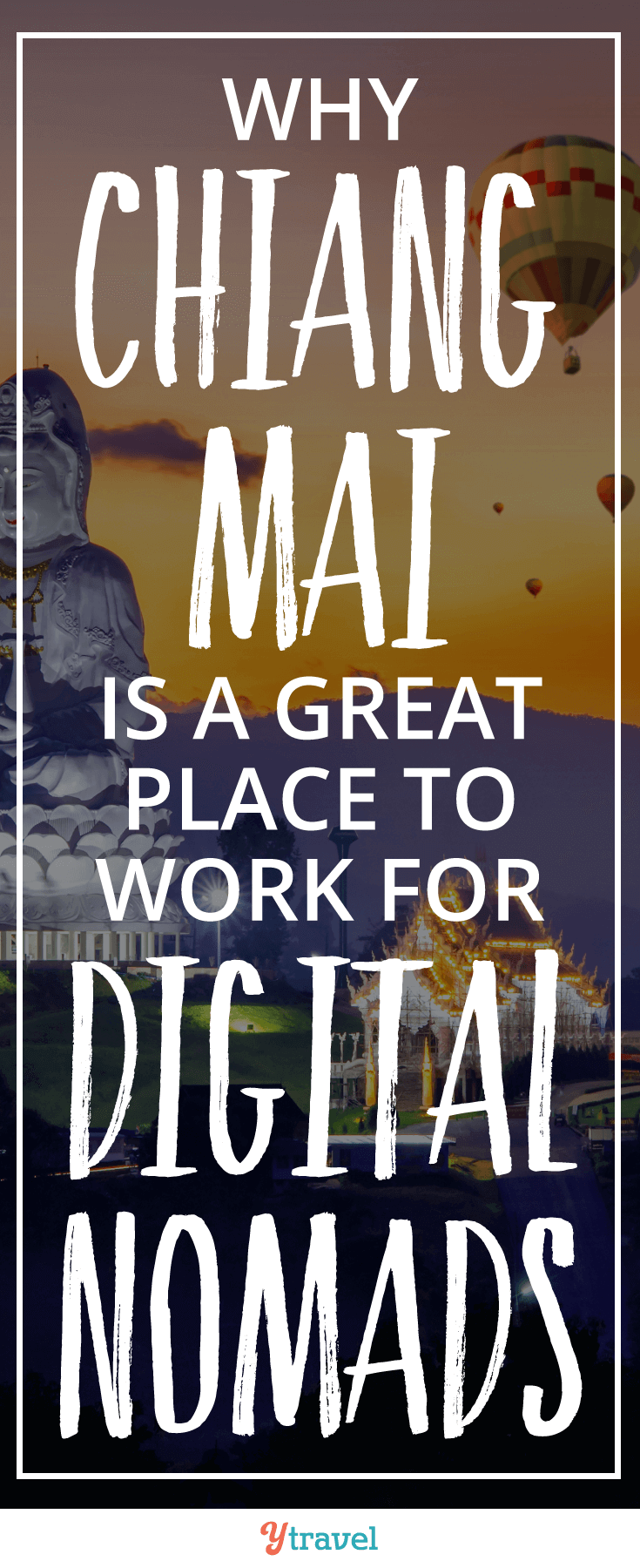
Have you visited Chiang Mai with your family or as a digital nomad? What advice do you have? Share your tips or ask any questions in the comments below.
[ad_2]
Source link
